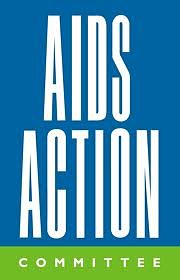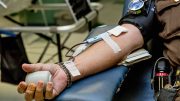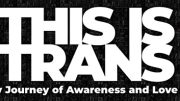Late last month, the Centers for Disease Control and Prevention (CDC) released their new surveillance report, Diagnoses of HIV infection in the United States and Dependent Areas, 2013. CDC estimates that there were about 47,352 newly diagnosed cases of HIV infection during 2013 in the 50 states, the District of Columbia, and six U.S. dependent areas. The estimated number of new HIV diagnoses has remained relatively stable during the five-year period from 2009 through 2013, according to CDC.
Although gay, bisexual, and other men who have sex with men (MSM) represent an estimated 2% of the U.S. population, according to CDC, over two-thirds (68%) of all HIV diagnoses in 2013 were among MSM. Blacks/African Americans represent 12% of the U.S. population but accounted for 46% of HIV diagnoses. Persons of Hispanic/Latino ethnicity represent 17% of the U.S. population but accounted for 21% of HIV diagnoses.
In considering this surveillance data, it is important to note that the number of new diagnoses of HIV is not the same as HIV incidence – the number of newly occurring infections. The reason is that many HIV-infected persons do not become aware of their HIV status until many months or years after they are infected. In fact, CDC estimates that about one in seven Americans living with HIV do not know their HIV status. The 2013 surveillance data include people who were diagnosed with HIV or AIDS during that year, whether they were infected recently or long ago.
In 2013, the estimated rate of diagnoses of HIV infection was 15 per 100,000 population – a rate similar to those seen in the previous four years. However, despite the stability in overall diagnosis rates, there were some notable differences in the rates seen within specific demographic groups.
Age: More than half (56.8%) of all estimated HIV diagnoses occurred among persons in their twenties (33.5%) or thirties (23.3%). About one-fifth (20.4%) occurred among persons in their forties. More than one-sixth (18.1%) of the estimated diagnoses occurred among people 50 or older. The remaining 4% of diagnoses occurred among persons under 20, with the vast majority of those in the 15-to-19 age group.
During the period from 2009 through 2013, the rates of HIV diagnoses increased among persons aged 13-14, 20-29, and 60 or older; the diagnosis rates decreased among persons aged 15-19 and 35-44; and the diagnosis rates remained fairly stable for all other groups. During 2013, young people 20-24 years old accounted for the highest percentage of new HIV diagnoses (17.0%), while those in the 25-29 age range had the highest HIV diagnosis rate – 36.3 per 100,000 – more than twice the national average.
Race/Ethnicity: Blacks/African Americans accounted for nearly half (46.1%) of all estimated newly reported HIV cases in 2013, with Whites accounting for 27.7%, Hispanics/Latinos accounting for 21.4%, and all other racial/ethnic groups accounting for about 5%. The HIV diagnosis rates per 100,000 continued to be substantially higher for Blacks/African Americans (55.9), Hispanics/Latinos (18.7), Native Hawaiian/Pacific Islanders (12.7), and persons of multiple races (16.8) compared to Whites (6.6). Put another way, compared to Whites, HIV diagnosis rates were 8.5 times higher among Blacks/African Americans, 2.8 times higher among Hispanics/Latinos, 1.9 times higher among Native Hawaiian/Pacific Islanders, and 2.5 times higher among persons of multiple races.
Gender: In 2013, four-fifths (80.3%) of the estimated new HIV diagnoses among adults and adolescents occurred in males, with the remaining 19.7% in females. Infection rates per 100,000 population decreased between 2009 and 2013 for adult and adolescent females, but remained fairly stable for males.
Transmission Category: Male-to-male sexual contact accounted for 64.8% of U.S. estimated new HIV cases in 2011, and an additional 2.7% were attributed to male-to-male sexual contact plus injection drug use. This means that over two-thirds of new diagnoses for the year were among gay, bisexual, and other men who have sex with men (MSM). The percentage of diagnoses in other major risk transmission categories were as follows: high-risk heterosexual contact, 25.1%; injection drug use (IDU), 6.5%; and perinatal exposure, 0.2%. The number of females in the high-risk heterosexual transmission category is more than twice that of the number of males in this category.
Considering transmission category and gender together reveals that 86.6% of all adult and adolescent female cases are associated with high-risk heterosexual exposure, while 84.3% of all male adult and adolescent cases were associated with male-to-male sexual contact (including MSM plus IDU).
Vast Majority of New U.S. HIV infections Come from People Not Receiving HIV Care
More than 90% of all new HIV infections in the U.S. could be averted if people were diagnosed early and received prompt, ongoing HIV care and treatment, according to a recent study published in JAMA Internal Medicine. CDC researchers used statistical modeling to estimate the rate and number of HIV transmissions attributable to persons at each of the following five stages of the HIV continuum of care: HIV infected but undiagnosed; HIV diagnosed but not retained in medical care; retained in care but not prescribed antiretroviral therapy (ART); prescribed ART but not virally suppressed; and virally suppressed.
The researchers found that the further people progress in HIV care, the less likely they are to transmit the virus. Of the estimated 1.15 million persons living with HIV in the U.S. during 2009, about 18.1% had not yet been diagnosed, 45.2% were aware of their infection but not retained in care, 4.1% were retained in care but not prescribed ART, 7.2% were prescribed ART but not virally suppressed, and 25.3% were virally suppressed. The researchers calculated that persons who were HIV infected but undiagnosed and persons who were HIV diagnosed but not retained in medical care were responsible for 91.5% (30.2% and 61.3%, respectively) of the approximately 45,000 HIV transmissions that occurred in 2009.
The HIV transmission rate for persons who were undiagnosed was 6.6 transmissions per 100 person-years – about 25% higher than the rate (5.3 transmissions per 100 person-years) for persons who were HIV diagnosed and not retained in medical care, and about 16 times higher than the rate (0.4 transmissions per 100 person-years) for persons who were virally suppressed.
“By quantifying where HIV transmissions occur at each stage of care, we can identify when and for whom prevention and treatment efforts will have the most impact,” according to Jonathan Mermin, Director of CDC’s National Center for HIV/AIDS, Viral Hepatitis, STD, and TB Prevention. “We could prevent the vast majority of new infections tomorrow by improving the health of people living with HIV today.”
Invest in PrEP to End AIDS
“HIV prevention is at a crucial moment. It is indispensable and advancing in leaps and bounds. Yet it is also in jeopardy,” according to Prevention on the Line, a recent report from AVAC. While ambitious prevention goals matter – such as the UNAIDS 90-90-90 targets to dramatically increase HIV testing, access to care, and retention in care worldwide by 2020 – AVAC argues that these goals will only be met if they are feasible, well-defined, measurable, and backed by adequate resources and political support. “The prevention goals issued so far are inspiring, but they don’t yet meet those requirements,” according to AVAC.
The report presents a three-part agenda to guide HIV prevention efforts. An outline of their agenda is provided below, together with AVAC’s brief comments about why each part is important.
1: Align high-impact strategies with human rights and realities. “If science does not get synched up with human rights then there is little hope of bringing the epidemic to a conclusive end.” Necessary steps:
- Achieve high coverage of antiretroviral treatment (ART), addressing issues of choice and coercion.
- Achieve 80% coverage of voluntary male circumcision with country plans based on models and real-world context.
- Meet prevention, treatment, and human rights needs of all key populations.
2: Invest in an oral PrEP-driven paradigm shift. “Now is the time to move from evidence to implementation. Demand is growing, and data are coming in.” Necessary steps:
- Implement large-scale pilots linked to national programs for oral PrEP.
- Plan for rollout of other antiretroviral-based prevention options.
- Create programs that emphasize options and agency for HIV-positive and HIV-negative people.
3: Demand short-term results on the path to long-term goals. “AIDS vaccine, passive immunization, and cure research are years from yielding licensed approaches. But short- and mid-term milestones are a must.” Necessary steps:
- Define accessible messages and milestones for broadly neutralizing antibody research.
- Ensure stakeholder engagement in cure research and passive immunization trial design.
- Define the standard of prevention for next-generation efficacy trials including of AIDS vaccines and multipurpose prevention technologies.
In releasing the report, AVAC noted, “We hope advocates will use Prevention on the Line as a roadmap and a discussion-starter about how to advance comprehensive combination prevention, including delivery of existing tools, demonstration of the potential of emerging strategies, and discovery of novel interventions like an effective preventive AIDS vaccine.”
OTHER NEWS REPORTS AND MATERIALS
Social Media and e-Learning: How Technology Is Connecting the HIV Community
The February 2015 issue of HRSA’s CAREAction newsletter focuses on the growing use of social media to enhance patient support, HIV testing, outreach, adherence, and retention in care. The 11-page newsletter highlights social media’s use in health care generally and HIV care in particular; discusses best practices for using social media in health communications; includes examples of effective application of social media for patient care and staff training; and provides a top ten list of social media lessons for health communication.
JIAS Special Supplement Focuses on HIV Among Adolescents
In time for the April 10 National Youth HIV and AIDS Awareness Day, the Journal of the International AIDS Society (JIAS) has published a special supplement focusing on HIV infection among adolescents. The entire 94-page supplement or individual articles may be accessed for free using the hyperlinks below:
- HIV and Adolescents: Focus on Young Key Populations (full issue)
- Tailored Combination Prevention Packages and PrEP for Young Key Populations
- Providing Comprehensive Health Services for Young Key Populations: Needs, Barriers and Gaps
- An Urgent Need for Research on Factors Impacting Adherence to and Retention in Care Among HIV-Positive Youth and Adolescents from Key Populations
- Adolescent Girls and Young Women: Key Populations for HIV Epidemic Control
- “We Don’t Need Services. We Have No Problems”: Exploring the Experiences of Young People Who Inject Drugs in Accessing Harm Reduction Services
- HIV Testing and Linkage to Services for Youth
- Mental Health and Support Among Young Key Populations: An Ecological Approach to Understanding and Intervention
- “First, Do No Harm”: Legal Guidelines for Health Programmes Affecting Adolescents Aged 10-17 Who Sell Sex or Inject Drugs
- Young Key Populations and HIV: A Special Emphasis and Consideration in the New WHO Consolidated Guidelines on HIV Prevention, Diagnosis, Treatment, and Care for Key Populations
In Case You Missed It: NASTAD Blog Series on HIV in the Black Community
In recognition of National Black HIV/AIDS Awareness Day and Black History Month, the National Alliance of State and Territorial AIDS Directors (NASTAD) created a five-part blog series posted throughout the month of February. According to NASTAD, the series was designed “to highlight voices within the Black community which often may remain silent, go unheard and are currently bearing the burden of the HIV epidemic: Black gay men/MSM, young Black gay men/MSM, members of the Black transgender community and Black women.” All five parts are available on the NASTAD site:
- Silence Isn’t Safety: Bringing True Awareness to National Black HIV/AIDS Awareness Day
- I Have My Protection – And It’s Not a Condom
- Young. Black. Gay. Why I “Speak Out” Against HIV and Stigma
- My Life as a Young, Black, Gay Man Impacted by HIV in the South
- When the Silence Is Not Our Own: Facing Invisibility as Black, Queer, and Trans
*Eric Brus is the Director of Health Information at AIDS Action Committee. This report is produced by the Health Library of the AIDS Action Committee in collaboration with the New England AIDS Education and Training Center Minority AIDS Initiative Project. The full version is available online.








